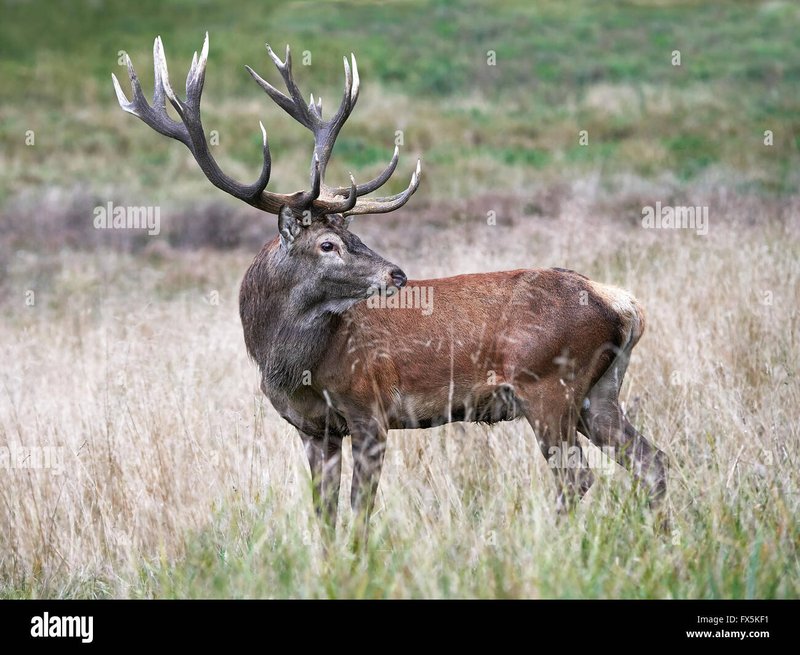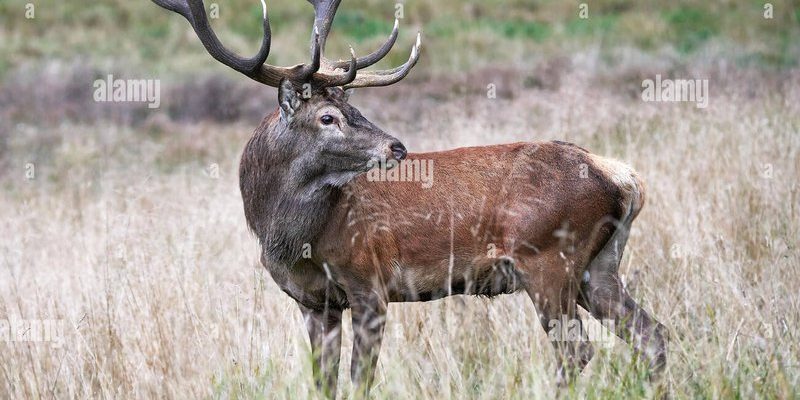
Now, you might be wondering, “What exactly do red deer do in their environment?” Well, let’s dive in! Understand that these animals help shape their habitat, support various other species, and even influence the landscape itself. By the end of this article, you’ll have a clear picture of the red deer’s role in its ecosystem and why preserving them matters.
Understanding Red Deer Behavior and Habits
Red deer, known scientifically as *Cervus elaphus*, are social animals that often form herds. These groups can include females and their young, while mature males usually spend time alone or in small bachelor groups. This social structure is essential for several reasons. First, it provides safety in numbers. Think about it: when there are more eyes watching, it’s easier to spot potential dangers, like predators.
Moreover, red deer are known for their seasonal habits. During the spring and summer, they graze on fresh grass and leafy plants, which provides them with the nutrients they need to live healthy lives. In the fall, when the rutting season kicks in, males engage in impressive displays of strength by clashing their antlers. This behavior isn’t just for show—it helps establish dominance and secure mating opportunities, thereby ensuring the continuation of the species.
In winter, when food resources become scarce, red deer adapt by moving to areas with more available forage. This ability to shift their location helps maintain a balance in their population and the ecosystem around them.
The Impact of Grazing on Plant Life
One of the primary roles red deer play in their ecosystems is as grazers. They help control the growth of vegetation by feeding on various plant species. This may seem simple, but it actually has a profound impact on the landscape. If red deer weren’t around to munch on young shoots and grasses, certain plants could overgrow, choking out others and limiting biodiversity.
You might think of it as a gardener pruning their plants. By selectively grazing, red deer help create openings for different plant species to thrive. This variety is essential for a healthy ecosystem since diverse plant life supports various insects, birds, and other animals. Plus, many plants rely on herbivores like red deer to disperse their seeds, contributing to the growth of new plants in different areas.
In this way, red deer shape the vegetation patterns in their habitats. Without them, ecosystems risk becoming one-dimensional and less resilient to changes and stressors, like climate change or disease.
Supporting Other Wildlife Species
Red deer don’t just impact the plants around them; they also create opportunities for other animals. By grazing and trampling through their environment, they create a unique habitat that supports numerous species. For instance, the trails they create can benefit smaller mammals and birds, making it easier for them to navigate the landscape.
Furthermore, their droppings contribute to soil health. Red deer dung is a natural fertilizer, enriching the soil and promoting plant growth. As plants flourish, they attract insects and other wildlife, leading to a thriving ecosystem. This chain reaction illustrates how interdependent nature can be—when red deer thrive, so does the environment around them.
Imagine walking through a forest after a rainy day, seeing the vibrant greens and hearing the birds chirping happily. That ecosystem’s health is partly thanks to species like red deer, which play such a vital role in shaping the environment.
Red Deer as Prey: A Source of Nutrition for Predators
Every healthy ecosystem relies on a delicate balance between predator and prey, and red deer fit perfectly into this relationship. They serve as a significant food source for various predators, including wolves, bears, and large birds of prey. This predation helps keep red deer populations in check, preventing overpopulation that could lead to habitat degradation due to overgrazing.
Here’s the thing: when predators hunt and manage the populations of red deer, they’re not just controlling one species. They’re helping to maintain a healthier ecosystem overall. A balanced predator-prey relationship promotes biodiversity and helps ensure that no single species dominates the landscape.
Furthermore, the presence of predators encourages red deer to stay vigilant, moving around and being active. This behavior helps distribute their grazing impact more evenly across the land, further contributing to the health of the ecosystem.
The Cultural and Economic Importance of Red Deer
Let’s not forget about the cultural and economic significance of red deer! Across many regions, these animals symbolize strength, grace, and the wild spirit of nature. They’re featured in art, folklore, and even tourism. Many people travel to see red deer in their natural habitats, boosting local economies through wildlife tourism.
On the practical side, red deer are also vital for some communities. They provide a sustainable source of venison, which is considered a healthy and nutritious protein. With proper management, hunting can be a valuable tool in conservation efforts, as it helps balance populations while providing resources for local people.
Moreover, awareness about the importance of red deer can foster conservation efforts. As we recognize their role in the ecosystem, we become more invested in protecting their habitats and ensuring these magnificent creatures continue to thrive.
Conservation Efforts and Challenges
Despite their importance, red deer face several challenges today. Habitat loss, poaching, and climate change all threaten their survival. As forests are cleared for agriculture and urban development, red deer lose essential spaces to live and roam.
Fortunately, conservation efforts are underway to protect these animals and their habitats. Wildlife reserves and national parks provide safe havens for red deer populations. These areas help preserve biodiversity and allow eco-friendly tourism to thrive. Community engagement is also crucial. Education programs that inform local populations about red deer’s roles help foster respect and care for these remarkable animals.
Supporting these initiatives can make a difference. When you choose to advocate for wildlife conservation, you’re helping ensure that red deer and many other species continue to play their essential roles in our world.
In summary, red deer are much more than just beautiful animals wandering through the woods. They play a vital role in their ecosystems, helping maintain plant diversity, supporting other wildlife, and contributing to cultural and economic landscapes. Understanding their importance gives us a deeper appreciation for the interconnectedness of nature.
So, the next time you see a red deer or hear their distinctive calls echoing through the forest, remember the essential work they do. Protecting them and their habitats isn’t just about preserving a species; it’s about maintaining the delicate balance of our ecosystems. Let’s work together to ensure that these magnificent creatures remain a part of our natural world for generations to come.

